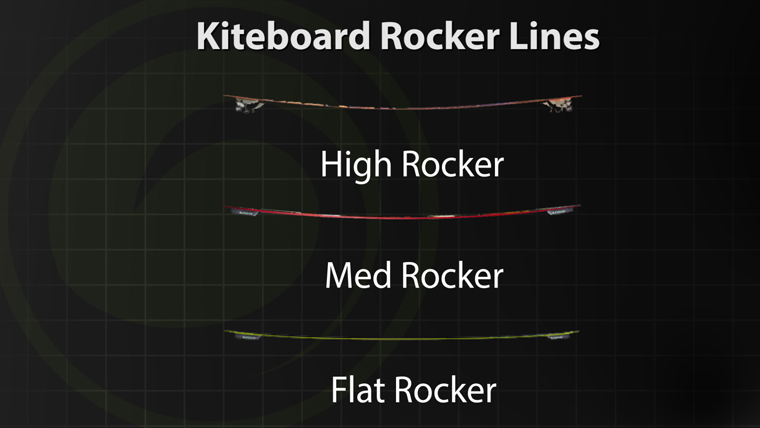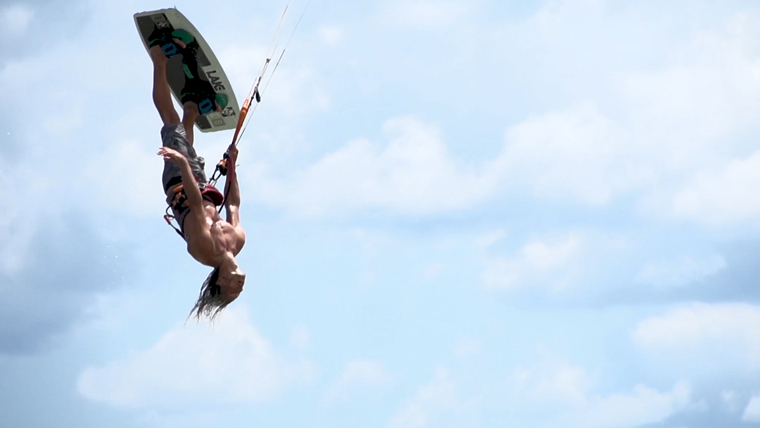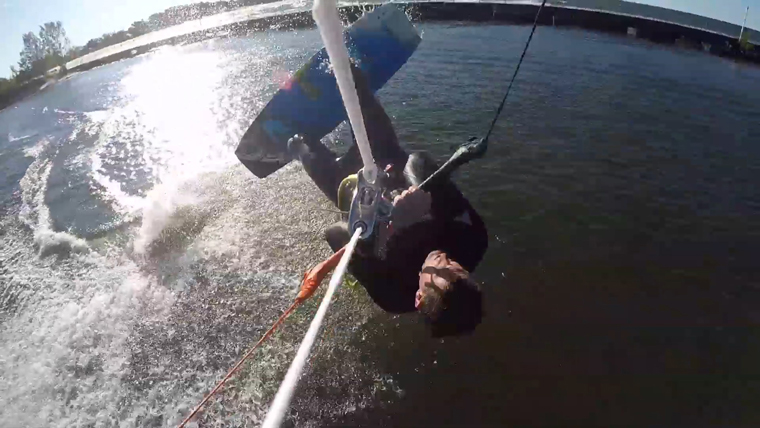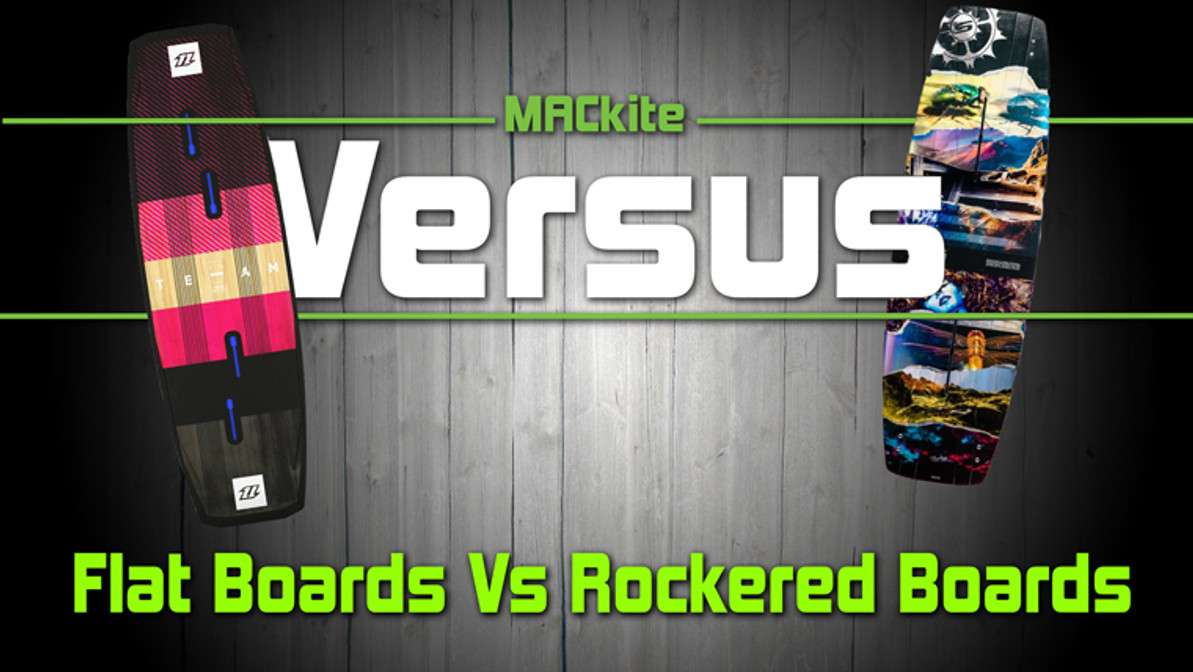Kiteboards: Flat Vs Rockerd _ Versus w/Rygo Ep 09
This week, we’re going to break down the difference between flat boards and rockered kiteboards.
Last week, we got started with our first kiteboard comparison. We broke down small boards vs large boards, as well as choosing the right size. This week, we’re going to get a little more tech and break down the difference between flat boards and rockered boards.
We’ll also finish up this series next week by breaking down construction materials like wood boards vs carbon boards. Lets get to it. In case you missed it, here is last weeks video.
Episode one of our three part series on kiteboards
If you're looking at picking up a new kiteboard or even your first kiteboard, you’ve probably noticed there are a lot of options out there and every board seems to have some sort of advantage over the others. One of the main points to consider when picking a board is how much rocker does it have.
So when I’m referring to rocker line it’s simply how rounded out the bottom of the board is from nose to tail. For you wakeboarders out there, in case you're wondering, Kiteboards only come in continuous rocker.
Being a sailing vessel, where you are resisting the pull of the kite, rather than riding nose forward at a boat. Kiteboards, even the high rocker boards tend to be flatter than your average wakeboard. We have no use for a three stage rocker as we’re not jumping wake.
If you're new to board sports check out this rocker chart I made to explain the concept.

Rocker line is simply how rounded out the bottom of the board is from nose to tail.
Let’s start with flat boards.
In kiteboarding, speed is the name of the game. Really, everything related to tricks and jumping comes down to board speed. Even when using a pull and go kite the the Cabrinha Switchblade or the North Evo, Kites that do most of the work for you, if you have good speed, you're going to get more air and more pop. Typically, the flatter the board, the more speed you can generate. Now there are other factors like how stiff or flexible the board is and we’ll cover that in next week's video regarding construction materials. But to give you perspective, the stiffer the board, the more pop you are going to get and the harder the landings.

Flat boards generate more speed making it easier to pop harder and jump higher
So what are the trade offs for opting for a flatter board? Well, to start the landings can be a bit rougher and while they might pop better in the chop, you’re going to feel everything a whole lot more. This is why you often see performance freestyle boards that are extremely stiff and extremely flat, They are built for maximum pop, maximum upwind ability and not much else. I recommend opting for something between all out performance and a softer ride.
What about Rockered boards?
What does rocker do, Why would you want it? And what are the benefits of opting for a flat kiteboard vs a rockered kiteboard?
So on the other end of the spectrum, we have rockered boards. Now these are characterized by slower speeds, less pop and softer landings. And for this reason, like I mentioned in last weeks video if you’re going for a rockered board, opt for a couple cm bigger than you normally ride. You’ll be glad that you did.
Now, you’re probably thinking wow, rockered boards don’t sound that much fun and you would be wrong. While they don’t have as much pop as their flatter counterparts, they are much more playful in the water. Often they have a faster turning radius and they feel so much better riding in the chop or landing powered.
For this reason you see riders who opt for boots usually are riding a more rockered board. This is to keep the board on their feet and to soften the impacts. Also wakeboarders who want one board for the cable park and kiteboarding often opt for boards like this. The slingshot refraction or the cabrinha CBL work great in both sports granted if you were to ask me, I would tell you to have a board for kiteboarding and a separate board for wakeboarding. Use the right tools for the job.

I'll admit, I'm a fan of a little rocker. Softer landings are a plus when learning new tricks.
So what’s the takeaway here? Well, for most people, I would recommend opting for a board in the middle of the road. No need to go for the flattest board out there or the most rockered one either. On the other hand, if you are after maximum performance, opt for a performance board, if you want to mimic wakeboarding, go for a rockered board. Like I always say, at the end of the day it’s all about having fun so pick a board that suits your needs or give us a call and we can walk you through it.
Next week, we’ll break down construction materials
Special thanks to Angel & Yuckite for the extra footage http://yuckite.com/home/
If you have any questions, give us a call 800 622 4655
Or hit us up on our live chat: https://messenger.providesupport.com/...
 Ryan (Rygo) Goloversic
Ryan (Rygo) Goloversic
Many people dream of quitting their job, traveling theworldandpursuing their passions. Rygo is one of those people. About eight years into a postal career, he decided to change everything and travel as a freelance videographer & writer. This took him from coast to coast and a variety of countries. Nowadays you can catch him on the phones, doing lessons, or working on videos. Of course, he still makes a point to travel as often as possible. He is passionate about helping people and sharing the stoke with his customers and students alike.
Recent Posts
-
North Navigator Pro Quick Release | How to Swap Yours Out With Ease
What You Need Before starting the replacement process, ensure you have all the necessary t …18th Apr 2024 -
Foil Drive | Essential Tips to Supercharge Your First Session
The Foil Drive makes your foiling life easier. You'll get up easier and catch more waves, …17th Apr 2024 -
2024 Duotone Slick Wing Review | What's New in This Year's Model?
The Duotone Slick has been a favorite of many for several years. Pros love it for its speed, …15th Apr 2024




